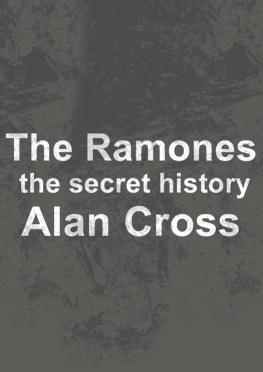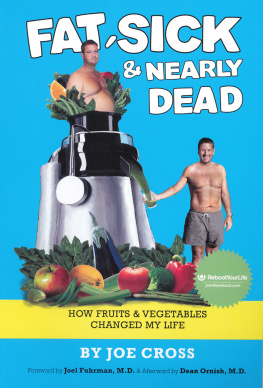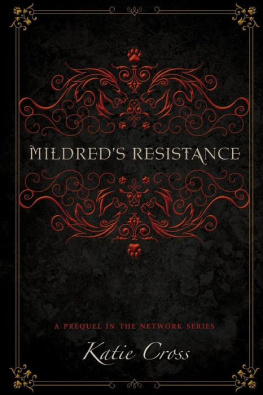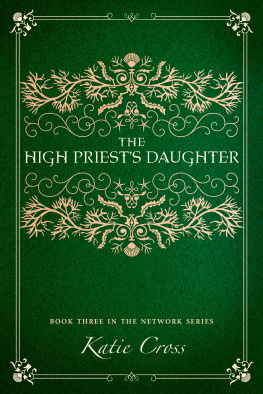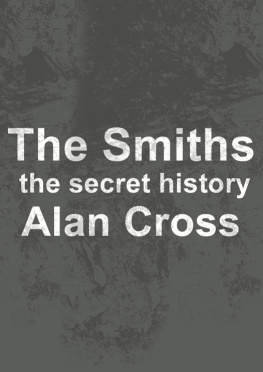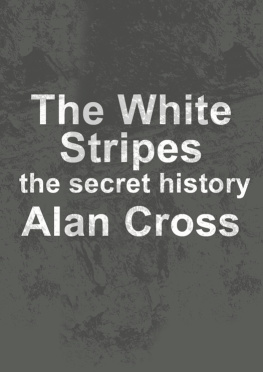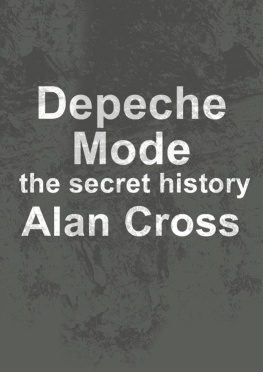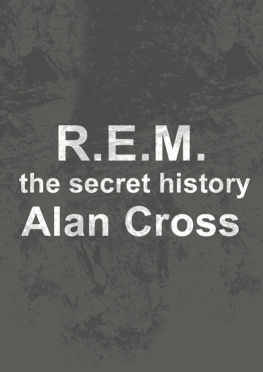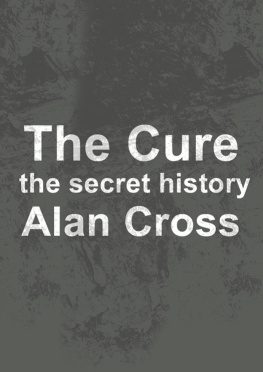Cross - The ramones: the secret history
Here you can read online Cross - The ramones: the secret history full text of the book (entire story) in english for free. Download pdf and epub, get meaning, cover and reviews about this ebook. year: 2011;2014, publisher: HarperCollins Canada;Audio Joe, genre: Non-fiction. Description of the work, (preface) as well as reviews are available. Best literature library LitArk.com created for fans of good reading and offers a wide selection of genres:
Romance novel
Science fiction
Adventure
Detective
Science
History
Home and family
Prose
Art
Politics
Computer
Non-fiction
Religion
Business
Children
Humor
Choose a favorite category and find really read worthwhile books. Enjoy immersion in the world of imagination, feel the emotions of the characters or learn something new for yourself, make an fascinating discovery.
- Book:The ramones: the secret history
- Author:
- Publisher:HarperCollins Canada;Audio Joe
- Genre:
- Year:2011;2014
- Rating:5 / 5
- Favourites:Add to favourites
- Your mark:
- 100
- 1
- 2
- 3
- 4
- 5
The ramones: the secret history: summary, description and annotation
We offer to read an annotation, description, summary or preface (depends on what the author of the book "The ramones: the secret history" wrote himself). If you haven't found the necessary information about the book — write in the comments, we will try to find it.
The ramones: the secret history — read online for free the complete book (whole text) full work
Below is the text of the book, divided by pages. System saving the place of the last page read, allows you to conveniently read the book "The ramones: the secret history" online for free, without having to search again every time where you left off. Put a bookmark, and you can go to the page where you finished reading at any time.
Font size:
Interval:
Bookmark:
In the early 1800s, an American pioneer named John Chapman traveled west from Massachusetts, collecting seeds from Pennsylvania cider presses. For the rest of his life, he planted thousands of apple trees through what is now Ohio, Indiana and Illinois. Chapman was given the nickname Johnny Appleseed because wherever he went, apple trees sprouted in his wake. In the mid-1970s, four middle-class kids from Forest Hills in Queens began to have the same effect with a new style of rock and roll known as punk. Whenever they played a town on one of their endless tours, new bands inevitably popped up in their wake within just a few days. Such is the legacy of the Ramones.
What began as a cartoonish attempt at making sick bubblegum music (think the Beach Boys on a combination of crank and glue) somehow turned into something much more profound and eternal. It was all a big, happy accident. The Ramones had no illusions about changing the world with music. They were just four guys who wanted to rock in the most basic, rudimentary way. In doing so, they reminded everyone that when it comes to the power and joy of rock and roll, sometimes less is more.
The roots of the Ramones go back to the day when John Cummings (a Yankees fanatic, born October 8, 1951) shared a joint with his new friend, Douglas Colvin (a collector of WWII memorabilia and a former hairdresser, born September 18, 1952). They were both working at a construction site at 50th and Broadway in New York and often spent their lunch hours watching girls and arguing the merits of the Beatles. John had been in love with the Beatles since he first saw them on The Ed Sullivan Show back in 1964. Douglas (Dee Dee to his friends) didnt mind the Beatles, but he had discovered something much more interesting: Iggy Pop and the Stooges.
One of these discussions led to the joint and, afterwards, a couple of beers at a local strip club. Many drinks later, a trip to Mannys Guitar Center on 48th Street was in order. Johnny and Dee Dee had decided to form a band. The date was January 23, 1974almost 10 years to the day from that Ed Sullivan broadcast.
and was tired of selling plastic flowers on the street in Greenwich Village.
Basic barre chords and a 4/4 beatthat would have to do. And besides, they thought, what more did you need to construct the perfect two-minute pop song?
There were other rules, too. No politics. Sing about real-life stuff like girls and sniffing glue. Follow the example of the Stooges. Remember your favorite pop songs, cartoons and comic books from the 60s. And dont worry about getting all the notes right.
During these rehearsals, they tried about 50 different names and had decided to go with Spice before someone suggested the Ramones. This name met with everyones approval because (a) Paul McCartney had used the pseudonym Paul Ramone when the Beatles were still known as the Silver Beatles, (b) all the guys were big fans of Phil Ramone, the record producer who churned out some of the most memorable AM radio hits of the 60s, and (c) Ramones made them sound like an outlaw gang. The implied one-for-all, all-for-one solidarity was also a plus. To further cement that sentiment of brotherhood, they decided that the members of the group would adopt Ramone as their last name.
The first official Ramones gig was what was kindly termed a showcase concert at their rehearsal space on March 30, 1974. About 30 peoplemostly friendspaid $2 apiece to see a nervous Dee Dee step on his bass and break it. It was the first and last time the group appeared as a trio.
By that summer, Tommy had begun to notice that this new group had some kind of potential. There was a certain appeal to the groups brash, minimalist style. What could be fresher than a group playing at the ragged edge of their ragged abilities? Tommy came to believe that the Ramones main problem wasnt their musicianship (or lack of it), it was that they lacked a front manas well as the fact that Joey wasnt a very good drummer. Everyone else seemed to agree, so on July 20, 1974, Joey was moved out front while Tommy took over on drums. The first lineup of the Ramones was now complete.
It was the start of a long string of regular gigs at the club. By the end of the year, the Ramones had taken the stage 74 timesand with each show, word on this new group spread through the underground music and art scene in New York. Soon, CBGB was crammed with everyone from the Andy Warhol crowd and stuffy intellectual types to rich uptowners slumming it in the Bowery and kids who were bored with music and needed something new and exciting.
Was this a joke or were they serious? Depending on whom you talked to, the Ramones were either complete idiots or minimalistic artistic geniuses. They rocked, but not like Led Zeppelin. The songs were definitely written in a 60s pop style, but were much more intense. And the material was a shock compared to the current state of pop (Paul Ankas (Youre) Having My Baby was the big AM radio hit in the summer of 1974). In any case, the groups raw energy and sense of fun soon had everyones attention. Even the New YorkTimes came out to see them:
The Ramones are a highly stylized extension of the punk medium. They deliver a nonstop set of brisk, monochromatically intense songs where conventional considerations of pace and variety are thrown calculatedly into the wind.
In late 1974, the band spent about $2,000 recording 15 demos in a cheap eight-track studio; each song ran less than two minutes. Cassette copies and carefully collated portfolios of press clippings were sent out to every record label they could find in the phone book. Among the rejection letters, the only label that expressed any interest was an indie called Sire. After a quick audition, Sire signed the Ramones on October 15, 1975, for a paltry $6,000 plus an additional $20,000 so the boys could go out and buy some new equipment. After Patti Smith, they were the first of their CBGB contemporaries to secure any kind of record deal.
Not wanting to waste any time, Sire had the band in a studio at Radio City Music Hall on February 2, 1976. By February 19, the first album was done. The whole project from start to finish cost $6,400, not counting the cost of replacing the cutter head on the mastering machine at the record pressing plant. The album had been recorded at such a high volume that it blew the cutter head clean off the machine.
The Ramones was unleashed on April 23, 1976. While the world of mainstream rock and roll definitely did not get itthe few radio stations that gave it a spin often ended up mocking songs such as Blitzkrieg Bop (the first single) and Beat on the Brat as noise and crapthose in touch with what was happening on the street saw it as something truly special. Without the benefit of radio airplay, the album sold 6,000 copies in its first week and eventually peaked at number 181 on the Billboard album chart.
Joey Ramone remembered it well:
It was really wild going over to England when we were selling out CBGBs. There was a wild scene going on but when we got over to England, we were playing for three thousand kids and everybody was already tuned in to what it was that we were all about. I remember at the time the big thing going on in England was pub rock. Dr. Feelgood was the big band at the time and Brinsley Schwarz. I remember we were treated like royalty when we got there and then we did this club Dingwalls. Basically, the whole make up of Dingwalls were all these kids that would later form these kind of ground-breaking bands of their own. At a soundcheck, we met Johnny Rotten and Joe Strummer and all these people. They were like totally taken with the band and really after thatwhen we left Englandthey told us that we had turned them on and kind of opened them up and inspired them to form their own bands basically. When we came back in 77 the whole thing was full blown and I feel like from that point on we really kind of brought upon a radical change that would really sweep the world.
Font size:
Interval:
Bookmark:
Similar books «The ramones: the secret history»
Look at similar books to The ramones: the secret history. We have selected literature similar in name and meaning in the hope of providing readers with more options to find new, interesting, not yet read works.
Discussion, reviews of the book The ramones: the secret history and just readers' own opinions. Leave your comments, write what you think about the work, its meaning or the main characters. Specify what exactly you liked and what you didn't like, and why you think so.

